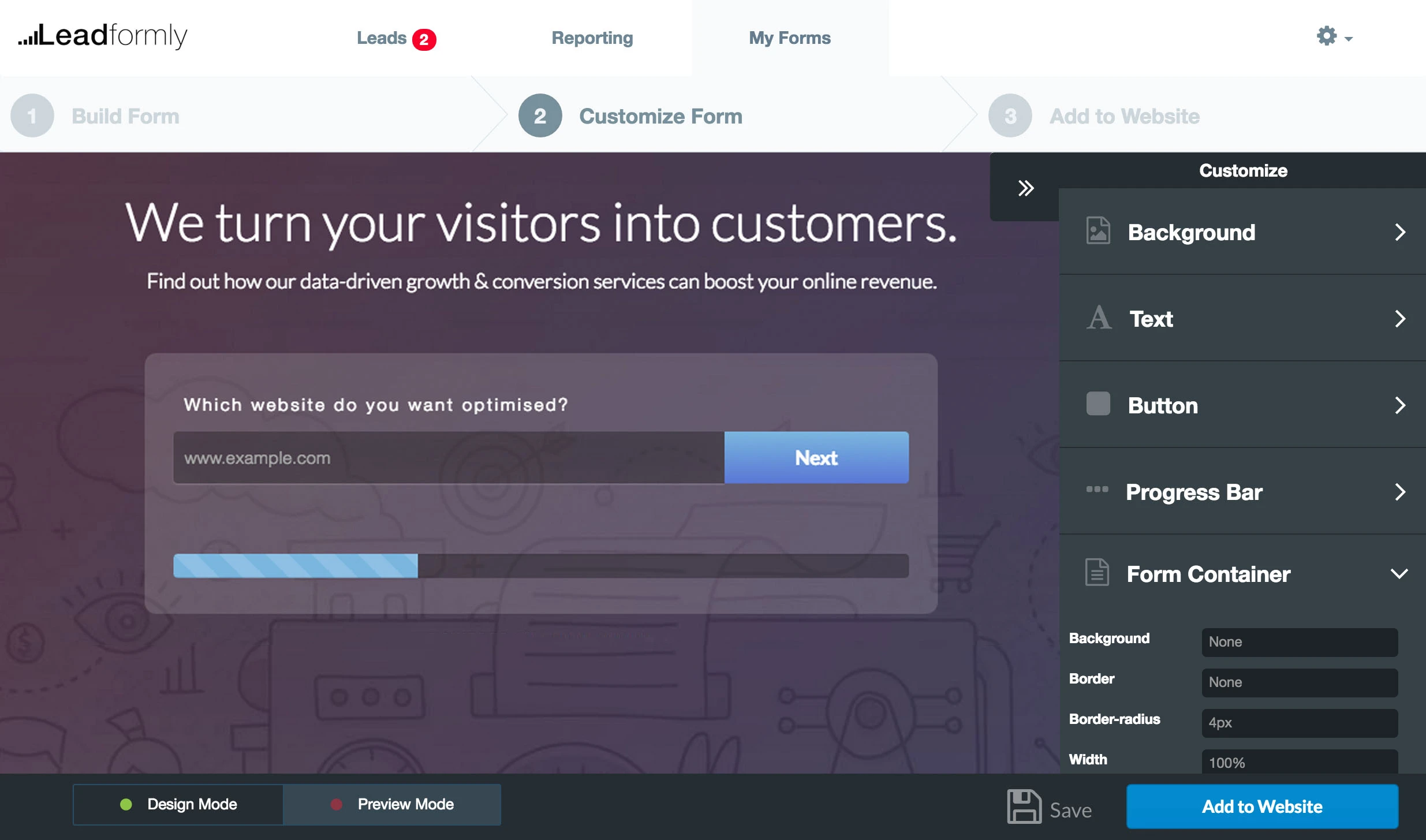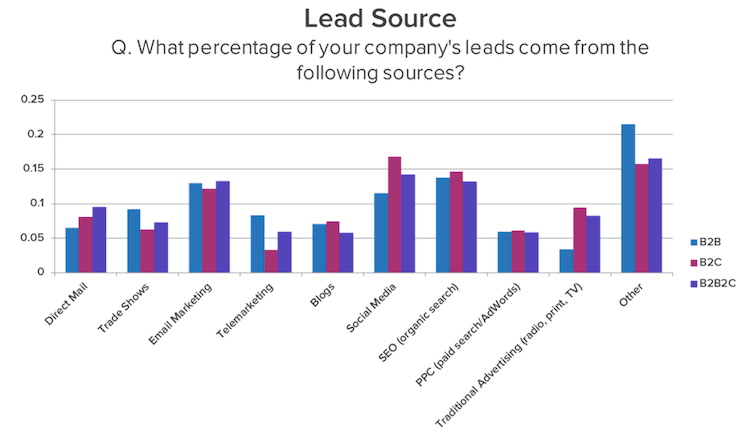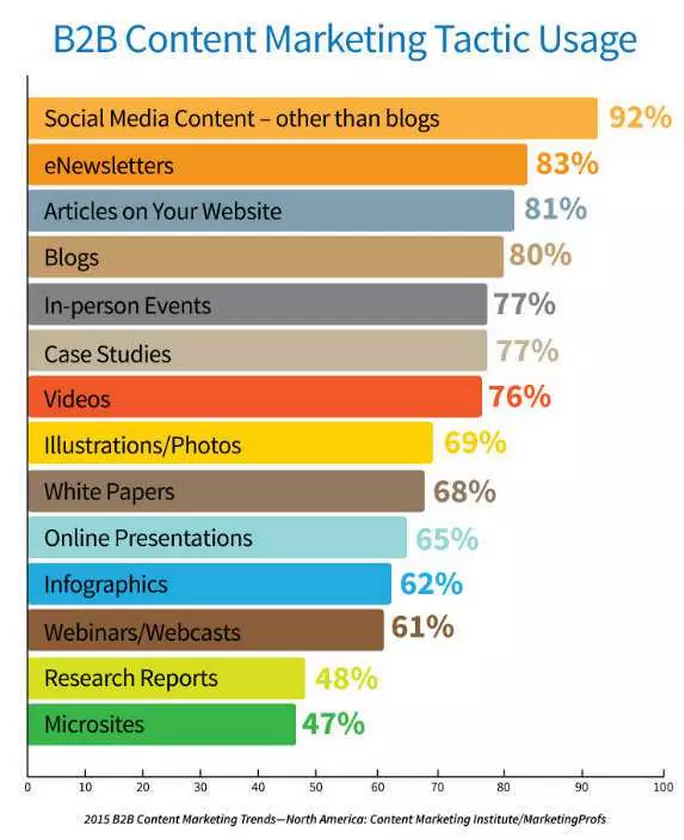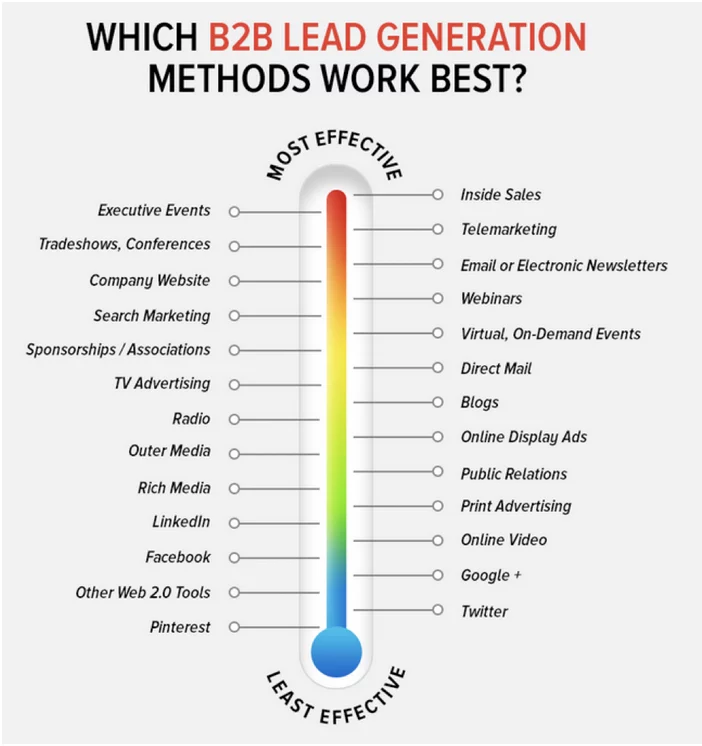
5 Growth Marketing B2B Lead Generation Strategies to Supercharge Your Growth
When it comes to B2B lead generation, what really impacts the bottom line?
In this post, we’re going to talk about how one health-tech company generated a 5,100% ROI from a $1 million integrated online marketing campaign. We’ll also look at how a major accounting firm generated $1.3 billion in pipeline revenue from content marketing.
But before we jump into the case studies and discuss specific strategies, it’s important that you get the foundations right and ensure that you’re able to capture and convert a large percentage of leads from your campaigns.
Avoiding the leaky bucket effect
Many B2B marketers spend a lot of time, metaphorically, pouring water into leaky buckets. Rather than fixing the bucket (the marketing funnel), they pour more water (traffic) into the bucket to keep it full.
This is a recipe for inflated acquisition costs and below-average results.
The biggest culprit here are landing pages and, in particular, your forms. Forms separate your leads from non-leads, and have a huge impact on your conversion rates and overall lead generation results.
Let’s say you send 1,000 visits to your landing page at a cost of $3 per visit. If your form converts at 1% you’ll get 10 leads at a cost per lead of $300. If, on the other hand, your form converted at 3%, you’d receive 30 leads at a cost per lead of $100.
That’s 3X more leads for one third of the cost per leads without spending a penny extra – just by improving your lead generation form.

Once your funnel is well-optimised and you’re confident that there’s no more opportunity to improve your landing pages / funnels, it’s time to acquire traffic – but which channels or lead generation strategies should you use?
Which B2B lead generation strategies work?
The answer to this question depends on who you ask.
If we were to go by Hubspot’s study of the best B2B lead sources, we’d conclude that SEO is the best (identifiable) lead generation channel.

If, on the other hand, we used Chief Marketer’s data on the same question, we’d conclude that email marketing is the most effective channel for B2B lead generation. Needless to say, there are similar surveys reporting that social media and content marketing are also the most effective forms of B2B lead generation.

Why so much variation?
The likely answer is to do with audience biases. A survey conducted by an email marketing provider is almost certainly going to have different results to one conducted by PPC management tool, as their audiences have different skillsets and biases, skewing the results of their sample. As such, we should take the specific ranking of different strategies in these studies with a pinch of salt.
Inconsistencies aside, the online strategies that consistently come out at the top are:
- Email marketing
- Search marketing
- Social marketing
- Content marketing
We’ll look at each these in more depth in a moment, but bear in mind that howyou use a lead generation channel is more important than what lead channel you choose.
Twitter can be used to close a $250,000 lead for a B2B business, or it can be used to spam potential leads and tarnish a brand. So, while the channel/strategy you choose will play a large role in how effective your lead generation is, how you execute your campaign will play an even bigger role.
With this caveat out the way, let’s look at some of the ways that B2B companies are using the four strategies listed above to generate impressive results.
5 Ways to Generate B2B Leads Online
In this section, we’ll cover the four strategies outlined above, as well as a strategy that hasn’t been mentioned in any of the studies, yet it enabled one B2B company to generate a 5,100% ROI from a $1 million investment.
First though, let’s talk about one of the oldest strategies in online marketing: email marketing.
1. Email Marketing
Email marketing is one of the few online marketing channels that has stood the test of time. In fact, email is 23 years old this year, and it still trumps the top spot on many B2B marketer’s lists of B2B lead generation strategies.
One of the biggest trends in email marketing at the moment, that has generated great results for many B2B businesses, is marketing automation.
Not sure what the fuss about marketing automation is? Read this. In short, marketing automation tools are effectively hybrid email marketing tools that connect with your CRM to enable you to automatically send highly targeted emails to leads that are personalised specifically to them.
When Thomson Reuters upgraded to a marketing automation solution, their revenue increased by 172%. Another company increased their revenue by 832%(going from $80,000 in debt to $2 million in revenue) in just three years.
While traditional newsletters and email marketing are still important, the ability to capture more data on users and use behavioural-triggers has enabled B2B marketers to get a lot smarter with how they target users in the inbox.
2. Content Marketing: From Blogging to Microsites
By creating a total of 48 infographics, videos, and Q&A blog posts targeting C-level prospects of large market cap financial institutions, the public accounting firm Crowe Horwath generated $250,000 in revenue attributed to content marketing.
If 6-figure growth doesn’t get you excited, perhaps 10-figures (a billion) will.
In 2012, Xerox created a microsite offering relevant tips to business owners. The result? 70% of the companies targeted interacted with the microsite, adding 20,000 new contacts to their pipeline, 1,000+ of which scheduled appointments. The value of those appointments exceeded $1.3 billion in pipeline revenue.
Given the broad scope of content marketing, a good question to ask is what type of content should B2B companies be focusing on to generate leads?
Well, you could go by which tactics are most commonly used by other B2B companies (displayed below). The risk of this approach is that, by definition, you’ll be doing what everyone else is doing.

While there is some wisdom in following trends, there’s a good argument to do exactly the opposite of what other marketers are focusing on.
Whenever you find yourself on the side of the majority, it is time to pause and reflect. – Mark Twain
Whether you’re a contrarian marketer or prefer to stick to what’s working for others, a good content marketing strategy requires a degree of diversity and experimentation to understand where the biggest growth opportunities are for your business.
So, by all means, experiment with the common and uncommon tactics. Whether you use microsites, blogging, research reports, or infographics, the important thing is to test what does and doesn’t work so that you can gradually refine your lead generation over time.
3. Search Marketing
Organic search marketing is arguably one of the most valuable long-term strategies for generating B2B leads.
About 5-6 years ago, I was working on the SEO campaign for a major business stationery brand. It was one of my first ‘big campaigns’ that I was allowed to manage in my previous job.
While I can’t take the credit (their in-house SEO team and previous agencies had laid a great foundation for us), I watched the site’s revenue from SEO increase by over £4 million, just from a handful of keywords reaching #1 on Google.
Getting to #1 in Google is a lot harder today than it was five or ten years ago, and it can barely be summarised in a few sentences.
If I were to attempt it, though, I’d probably say that good SEO in 2015 is largely a bi-product of doing things well in other areas e.g. design, conversion rate optimisation, content marketing, and social. While there are exceptions, this is increasingly looking like the rule.

4. Social Media
Calling social media an effective B2B lead generation strategy is a controversial discussion to be starting.
While social media scored very well on both of the aforementioned ‘studies’, we can just as easily find reports where social media channels are regarded as the least effective lead generation strategies.

The bottom line is, social media isn’t inherently a poor channel for B2B lead generation. The reason social media is sometimes rated poorly on these aggregate studies is because most B2B companies have an ill-fitting social media strategy, to put it politely.
While tens of thousands of companies blast out self-promotional drivel, a minority of businesses use it generate and nurture millions of dollars worth of leads. In this instance, it’s best to learn from the minority rather than the majority.
One of the most obvious ways to generate B2B leads from social media is using LinkedIn. An commodity risk management company managed to generate over $2 million in pipeline value through their lead generation strategy.
Another consideration is that social media is an integral part of content marketing, and to some extent, search marketing. How successful will your blogging or infographics be if no one’s following your company’s updates on social media?
5. Integrating it all together
It’s said that success leaves clues. Well, when a $37 billion company generates a 5,100% return on investment on a million-dollar marketing campaign, it might be a pretty good clue.
From a $1 million investment in an integrated marketing campaign that included display ads, email marketing, campaign websites and content marketing, the healthcare technology company Optum generated $52 million in new business.
So, what’s the clue?
I believe it’s this: exceptional lead generation results come from a relentless willingness to experiment with different tactics, and to combine tactics across multiple channels.
Only by experimenting, can you truly know what does and doesn’t work, and when you know this, you can use your time and budget more effectively to generate higher returns on your investment, and better lead generation results overall.
I hope this post has given you some inspiration on what’s possible with B2B lead generation, and which areas are best to focus on.
Inbound Campaign Planning Toolkit
Set of downloadable templates-from SEO to lead scoring to blogging-that'll give you a proven, repeatable framework for successful inbound campaigns.





Comments